Abstract
Specific immunoglobulin A (IgA) to Bordetella pertussis filamentous hemagglutinin (FHA) and pertussis toxin (PT) was determined in mucosal secretions by an enzyme-linked immunosorbent assay (ELISA). It took 3 to 4 h to complete the ELISA. The upper limits of normal values for age were determined in nasopharyngeal (NPH) secretions from 23 patients with viral infections and in 10 healthy adults working with pertussis patients or cultures. A significant IgA response to FHA was found in 38 of 54 (70%) and to PT in 28 of 54 (52%) NPH secretions from patients with pertussis confirmed by culture, serology, or both. The rate of positive responses to either antigen (44 of 54 [81%]) was significantly higher than that by culture alone (29 of 54 [54%]; P less than 0.01). The rate of positive responses increased from 65% in patients with symptoms for 1 week or less to 87 to 92% in patients with symptoms for 2 or more weeks. The specific IgA response to PT was found in 100% of NPH samples from 17 unimmunized children less than 3 years of age and in only 30% of adults and immunized children greater than 3 years of age. A response to FHA was found in 65 to 73% of the NPH secretions in all age groups. Saliva samples were found to contain specific IgA to FHA and PT in all age groups, but these were of diagnostic value in 50% (11 of 22) of the adult patients. The specificity of the ELISA was 100% (10 of 10 negatives) in NPH secretions from patients with pertussis-like cough who had negative cultures and serology. The results indicate that determination of specific IgA to PT and FHA in NPH aspirates represents a sensitive and rapid diagnostic method for the detection of pertussis.
Full text
PDF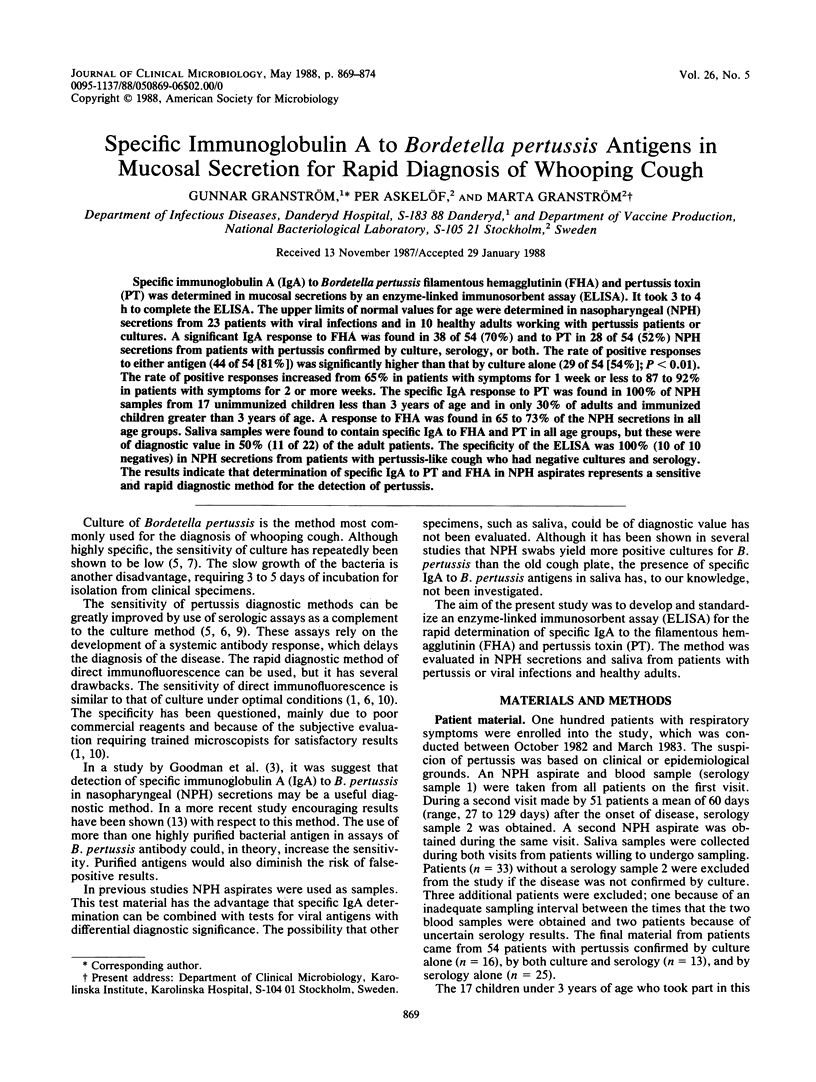

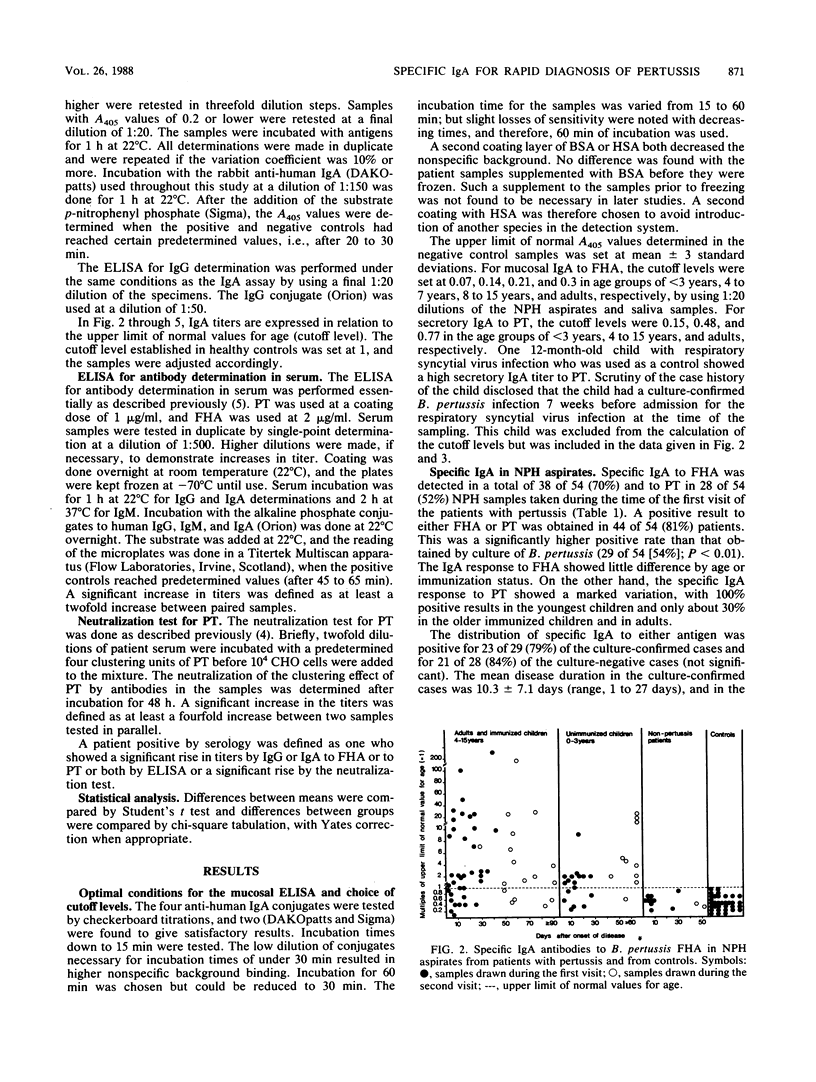
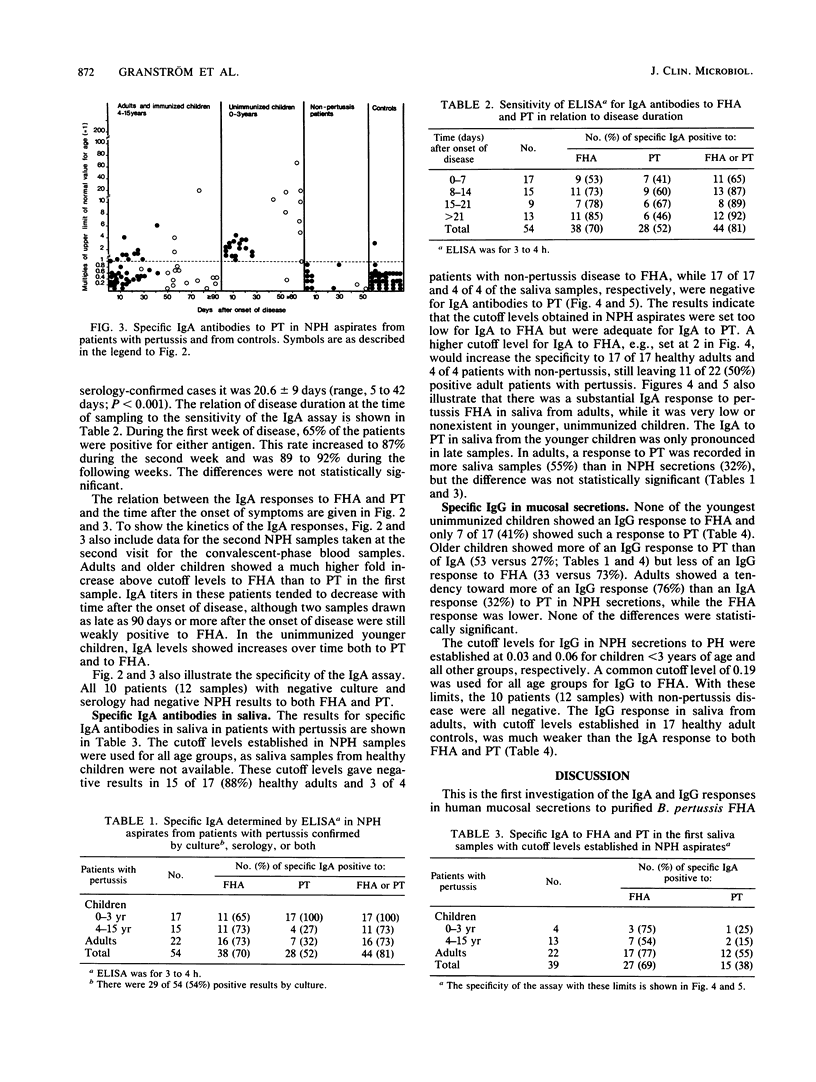
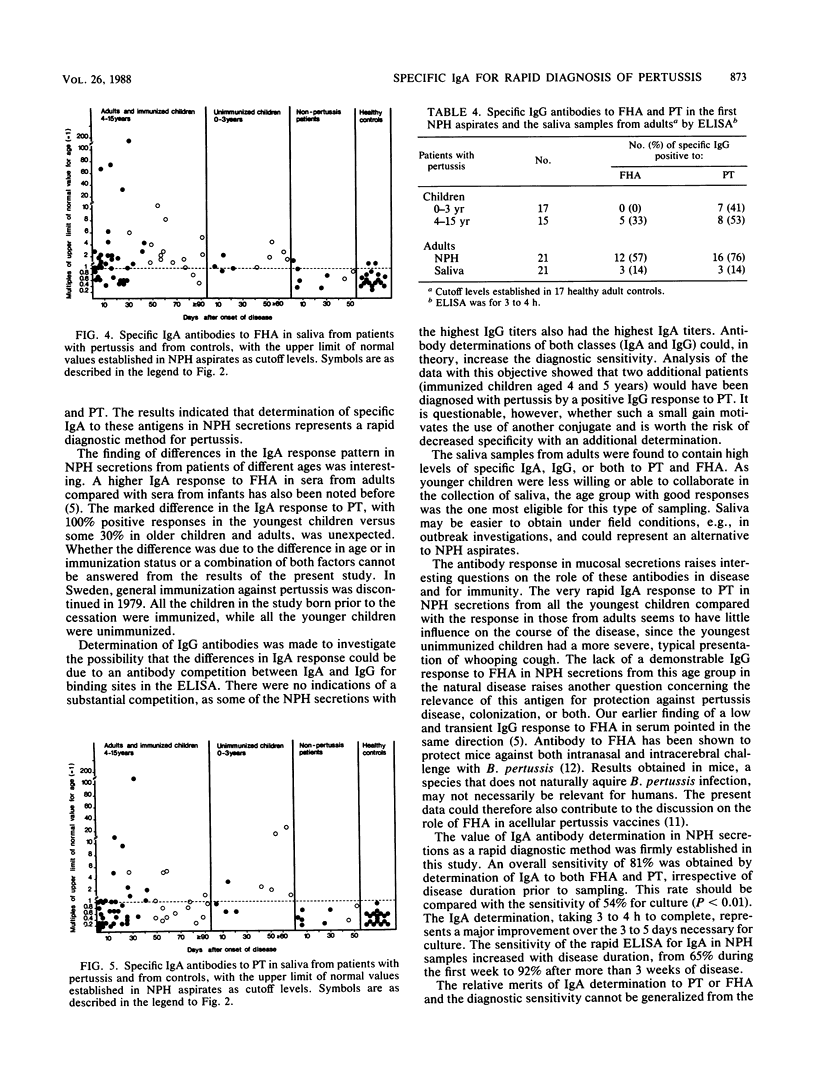
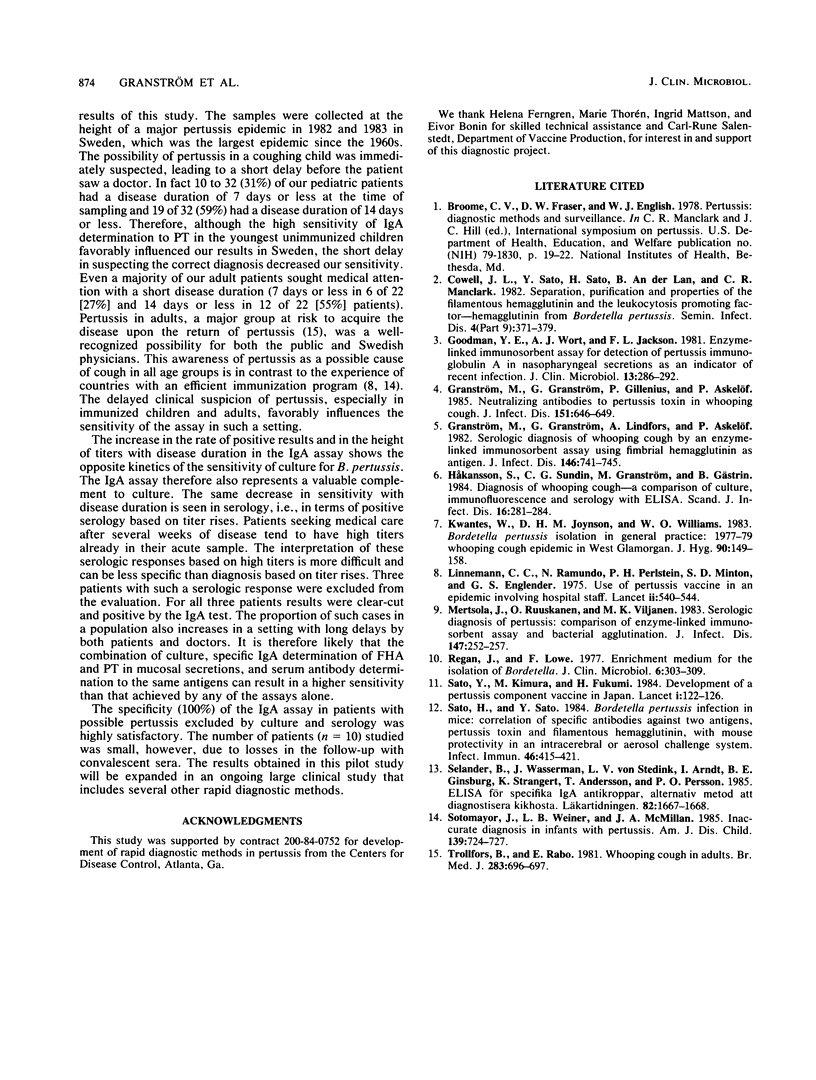
Images in this article
Selected References
These references are in PubMed. This may not be the complete list of references from this article.
- Goodman Y. E., Wort A. J., Jackson F. L. Enzyme-linked immunosorbent assay for detection of pertussis immunoglobulin A in nasopharyngeal secretions as an indicator of recent infection. J Clin Microbiol. 1981 Feb;13(2):286–292. doi: 10.1128/jcm.13.2.286-292.1981. [DOI] [PMC free article] [PubMed] [Google Scholar]
- Granström M., Granström G., Gillenius P., Askelöf P. Neutralizing antibodies to pertussis toxin in whooping cough. J Infect Dis. 1985 Apr;151(4):646–649. doi: 10.1093/infdis/151.4.646. [DOI] [PubMed] [Google Scholar]
- Granström M., Granström G., Lindfors A., Askelöf P. Serologic diagnosis of whooping cough by an enzyme-linked immunosorbent assay using fimbrial hemagglutinin as antigen. J Infect Dis. 1982 Dec;146(6):741–745. doi: 10.1093/infdis/146.6.741. [DOI] [PubMed] [Google Scholar]
- Håkansson S., Sundin C. G., Granström M., Gästrin B. Diagnosis of whooping cough--a comparison of culture, immunofluorescence and serology with ELISA. Scand J Infect Dis. 1984;16(3):281–284. doi: 10.3109/00365548409070401. [DOI] [PubMed] [Google Scholar]
- Kwantes W., Joynson D. H., Williams W. O. Bordetella pertussis isolation in general practice: 1977-79 whooping cough epidemic in West Glamorgan. J Hyg (Lond) 1983 Apr;90(2):149–158. doi: 10.1017/s0022172400028825. [DOI] [PMC free article] [PubMed] [Google Scholar]
- Linnemann C. C., Jr, Ramundo N., Perlstein P. H., Minton S. D., Englender G. S. Use of pertussis vaccine in an epidemic involving hospital staff. Lancet. 1975 Sep 20;2(7934):540–543. doi: 10.1016/s0140-6736(75)90907-1. [DOI] [PubMed] [Google Scholar]
- Mertsola J., Ruuskanen O., Kuronen T., Viljanen M. K. Serologic diagnosis of pertussis: comparison of enzyme-linked immunosorbent assay and bacterial agglutination. J Infect Dis. 1983 Feb;147(2):252–257. doi: 10.1093/infdis/147.2.252. [DOI] [PubMed] [Google Scholar]
- Regan J., Lowe F. Enrichment medium for the isolation of Bordetella. J Clin Microbiol. 1977 Sep;6(3):303–309. doi: 10.1128/jcm.6.3.303-309.1977. [DOI] [PMC free article] [PubMed] [Google Scholar]
- Sato H., Sato Y. Bordetella pertussis infection in mice: correlation of specific antibodies against two antigens, pertussis toxin, and filamentous hemagglutinin with mouse protectivity in an intracerebral or aerosol challenge system. Infect Immun. 1984 Nov;46(2):415–421. doi: 10.1128/iai.46.2.415-421.1984. [DOI] [PMC free article] [PubMed] [Google Scholar]
- Sato Y., Kimura M., Fukumi H. Development of a pertussis component vaccine in Japan. Lancet. 1984 Jan 21;1(8369):122–126. doi: 10.1016/s0140-6736(84)90061-8. [DOI] [PubMed] [Google Scholar]
- Sotomayor J., Weiner L. B., McMillan J. A. Inaccurate diagnosis in infants with pertussis. An eight-year experience. Am J Dis Child. 1985 Jul;139(7):724–727. doi: 10.1001/archpedi.1985.02140090086039. [DOI] [PubMed] [Google Scholar]
- Trollfors B., Rabo E. Whooping cough in adults. Br Med J (Clin Res Ed) 1981 Sep 12;283(6293):696–697. doi: 10.1136/bmj.283.6293.696. [DOI] [PMC free article] [PubMed] [Google Scholar]



